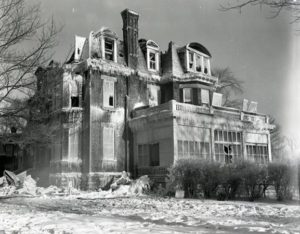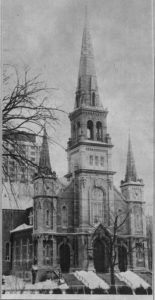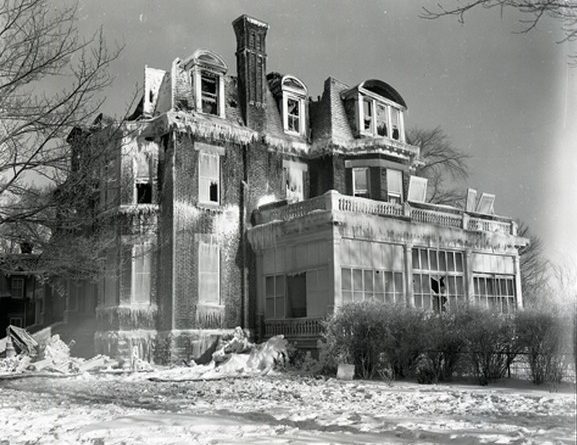Mighty neighbourhood fires
François Bregha
We are fortunate to live in a neighbourhood with outstanding built heritage. Yet, it is also worth remembering that over the years we have lost some of that heritage to fire. The first such loss was probably a Methodist chapel that once stood on Rideau Street and gave its name to Chapel Street. Other Sandy Hill fires of note include —
1873 – Patterson Place
The fire started at the rear of a townhouse development and eventually spread to neighbouring buildings, consuming the entire block between Daly, Cumberland, Stewart and Waller. Among these buildings was St Alban’s Terrace where Sir John A. MacDonald had lived from 1866 to 1870, when he complained about the sickening smell of the sewer. He was Prime Minister at the time. Two other Fathers of Confederation, Sir Alexander Galt and Sir Leonard Tilley had also lived on that block. The following year, perhaps coincidentally, the City of Ottawa decided to assume firefighting responsibilities itself, and stop contracting to private companies.
1903 – University of Ottawa
At the time, the University was concentrated largely in a single imposing building on the south side of Wilbrod just west of Cumberland: now part of the green in front of Tabaret Hall. It is believed that a carelessly discarded cigarette was the cause of the fire that consumed the whole building on December 3, 1903. Several people were trapped on the building’s upper floors and three died.
1930 – St Joseph’s Church
The current church is the third on the site. The first one, built in 1858 was replaced by a bigger church in 1892. It burned down on December 27, 1930 and was replaced by the current building. The fire started when a tray of votive candles fell on a nativity scene that included straw and evergreens. The fire spread quickly and the building could not be saved even though all of Ottawa’s 11 fire stations, and one from Hull, sent men and equipment to the site.
1949 – Minto Skating Club
The skating rink used to stand on Waller Street, just south of Laurier and it was here that Barbara Ann Scott, Canada’s 1948 Olympic gold medalist trained. Rather than rebuild at the same location, the Club decided to build a new rink a little further south on Templeton, that was subsequently demolished to make way for the university’s current sport facilities.
1955 – 297 Laurier Ave. E.
Two days before Christmas, a three-storey apartment building at the corner of Friel St. was completely destroyed by fire, killing a mother and her child, injuring four people and leaving 40 residents homeless.

1956 – Booth House
The Soviet Embassy had occupied the former J. F. Booth house at 285 Charlotte since 1943. The house caught fire on a very cold New Year’s Day in 1956. Charlotte Whitton, Ottawa’s Mayor at the time, famously had to intervene personally to persuade the Soviets to let firemen enter the building. Alas, by then it was too late and the house had to be demolished. The Soviets hired Ottawa architect W. E. Noffke to design the building that still stands. Its façade has been modernized since.
1970 – Ottawa Little Theatre
The Theatre has stood at the corner of King Edward and Besserer since 1928 but it used to occupy a former Methodist church. That building caught fire on July 1, 1970. Because it was a public holiday, there was no one on site and the old church was beyond salvage by the time neighbours noticed the flames. Charles Haines, the Carleton professor and well known critic, recalled, “The whole thing was a mass of rubble. Sitting on a tilt on one pile was the theatre safe. All it had was 12 bottles of Champagne . . . As I recall, we sat down and drank some while we decided what to do next.” The theatre, of course, was rebuilt and will resume hosting public performances after COVID.

1907 and 1978 – Sacré-Coeur church
The current squat building at the corner of Laurier and Cumberland is a pale echo of the grand church that used to stand on this site. Sacré-Coeur was first destroyed by the flames on June 11, 1907 and then again on November 24, 1978. Both buildings had been highly ornate, and their destruction was a major loss to the city’s Catholic built heritage. The current building is integrated in the university and includes class and meeting rooms.
There have been no comparable fires in Sandy Hill for the last 40 years. Let us hope it stays that way.
